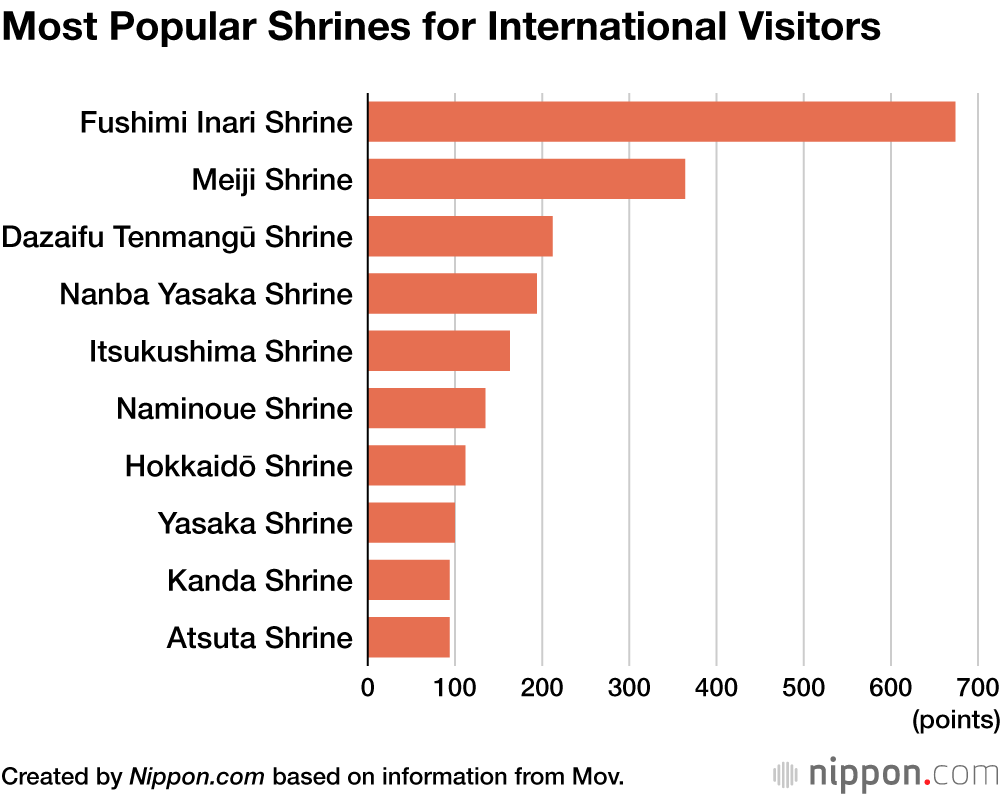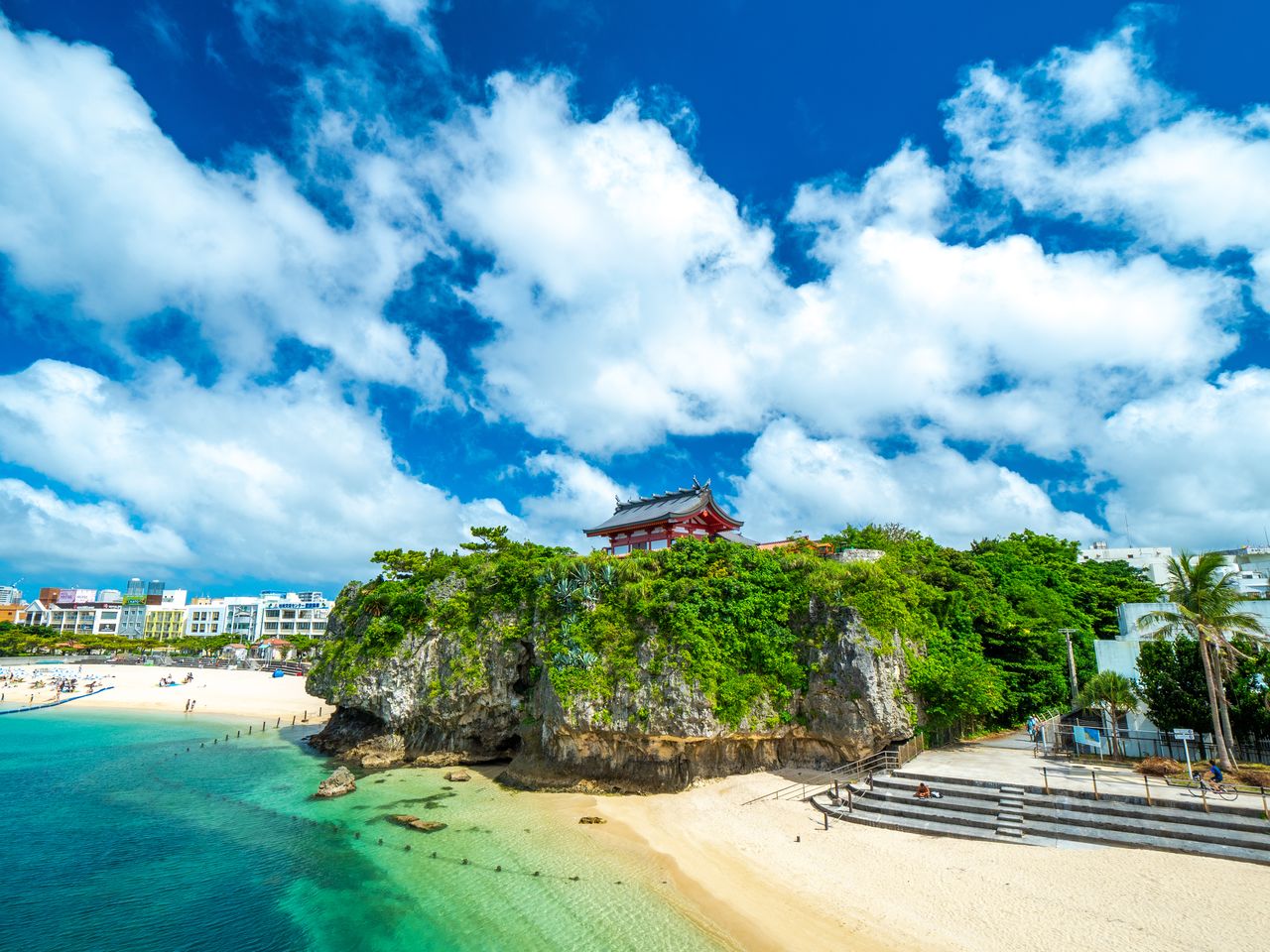
Fushimi Inari Shrine Ranked Top by International Visitors to Japan
Travel Economy- English
- 日本語
- 简体字
- 繁體字
- Français
- Español
- العربية
- Русский
Shibuya-based Mov, which operates the website Hōnichi Labo concerning business related to inbound tourism to Japan, analyzed foreign-language reviews of 362 independently selected shrines across Japan to compile a popularity ranking. The survey was conducted between January 2 and 15, 2024, with information extracted from 947 foreign-language reviews that had been posted publicly on Google Maps.
Overwhelmingly, the top spot went to Fushimi Inari Shrine in Kyoto Prefecture. The senbon torii, two rows of many bright vermilion torii gates standing densely together to form tunnels, has become the place to capture unique photo moments. Since the Edo period (1603–1868), torii have been dedicated as a prayer or sign of gratitude for fulfillment of a great wish, and it is said that there are around 10,000 such gates on Mount Inari, where this shrine is located.
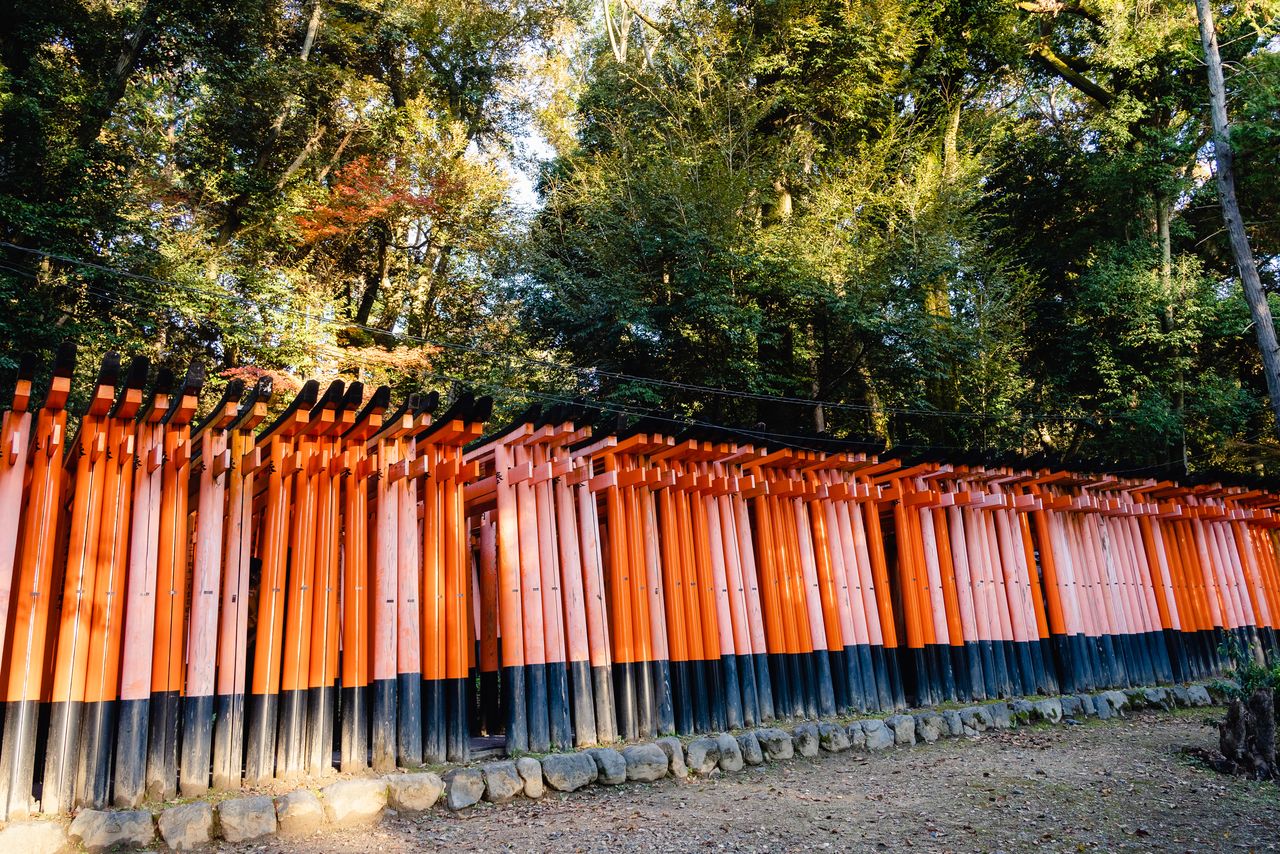
A side view of the senbon torii gates, standing in a dense row, at Fushimi Inari Shrine. (© Pixta)
Second place went to Meiji Shrine, an oasis in the center of metropolitan Tokyo. Due to its good accessibility, it can be easily included along with other sightseeing spots in the city.
Ranking third was Dazaifu Tenmangū Shrine, where the scholar, poet, and politician Sugawara no Michizane (845–903) is enshrined and revered as the god of learning. The shrine is easily reached by direct bus in just 30 minutes from Fukuoka Airport’s international terminal, making it particularly popular with inbound tourists from Asia.

Sacred oxen can be found within the precincts of Dazaifu Tenmangū Shrine, in commemoration of Sugawara no Michizane having been born and passing away on Days of the Ox (ushi no hi). (© Pixta)
The top 10 based on English-language reviews had a well-balanced assortment of famous tourist destinations from both the east and west of Japan.
English
| 1 | Fushimi Inari Shrine (Kyoto) |
| 2 | Meiji Shrine (Tokyo) |
| 3 | Itsukushima Shrine (Hiroshima) |
| 4 | Nanba Yasaka Shrine (Osaka) |
| 5 | Dazaifu Tenmangū Shrine (Fukuoka) |
| 6 | Yasaka Shrine (Kyoto) |
| 7 | Hie Shrine (Tokyo) |
| 8 | Nikkō Tōshōgū (Tochigi) |
| 9 | Kanda Shrine (Tokyo) |
| 10 | Sumiyoshi Shrine (Osaka) |
Created by Nippon.com based on information from Mov.
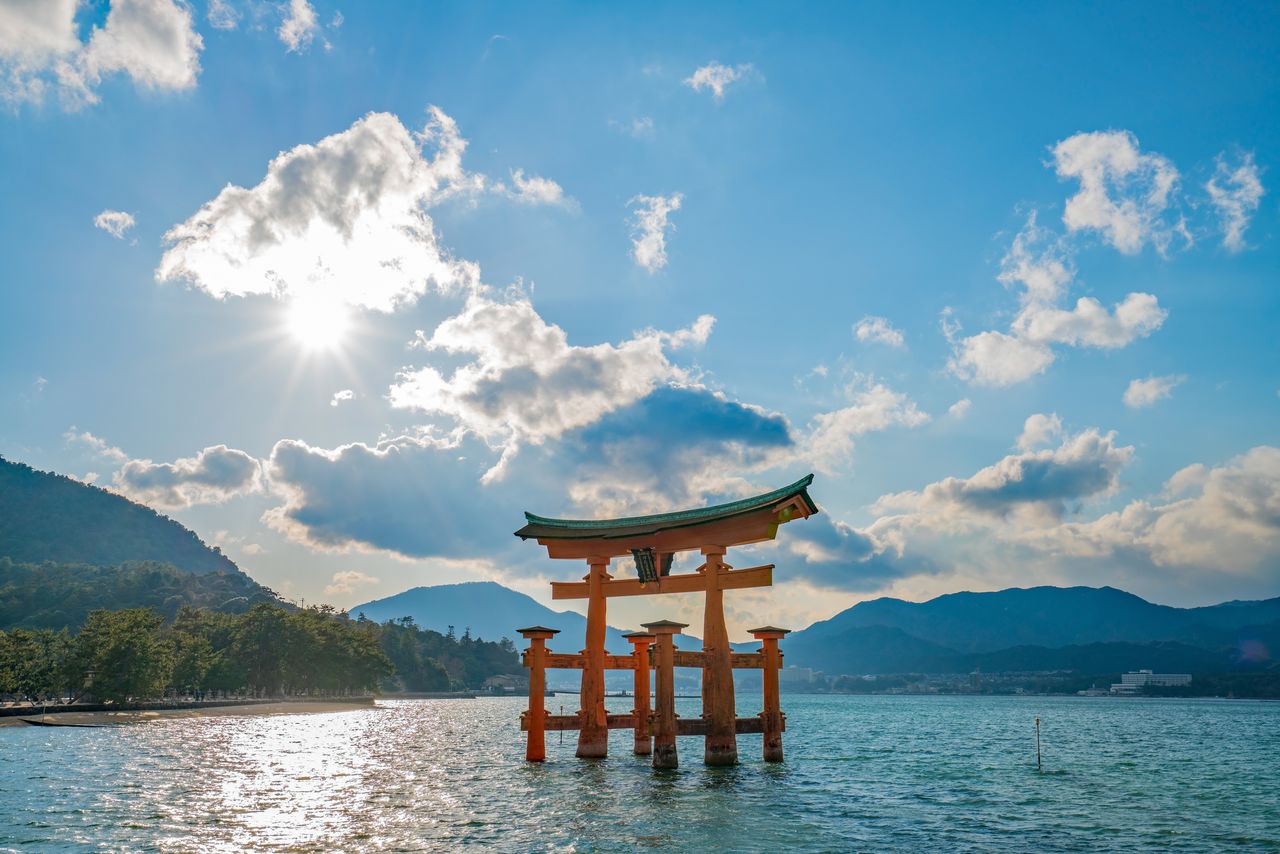
The “floating” torii gate at Itsukushima Shrine. (© Pixta)
Based on reviews in traditional Chinese, Naminoue Shrine in Okinawa was the most popular. This stands on the cliffs of a raised coral reef and is known as a power spot for love. Seven out of the top 10 shrines in this list were in western Japan.
Traditional Chinese
| 1 | Naminoue Shrine (Okinawa) |
| 2 | Fushimi Inari Shrine (Kyoto) |
| 3 | Nanba Yasaka Shrine (Osaka) |
| 4 | Meiji Shrine (Tokyo) |
| 5 | Dazaifu Tenmangū Shrine (Fukuoka) |
| 6 | Hokkaidō Shrine (Hokkaidō) |
| 7 | Kasuga Taisha Shrine (Nara) |
| 8 | Heian Shrine (Kyoto) |
| 8 | Kushida Shrine (Fukuoka) |
| 10 | Atsuta Shrine (Aichi) |
Created by Nippon.com based on information from Mov.
In the ranking for Korean-language reviews too, seven out of the top 10 were located in western Japan.
Korean
| 1 | Fushimi Inari Shrine (Kyoto) |
| 2 | Dazaifu Tenmangū Shrine (Fukuoka) |
| 3 | Itsukushima Shrine (Hiroshima) |
| 4 | Heian Shrine (Kyoto) |
| 5 | Meiji Shrine (Tokyo) |
| 6 | Atsuta Shrine (Aichi) |
| 7 | Kushida Shrine (Fukuoka) |
| 8 | Watazumi Shrine (Nagasaki) |
| 9 | Kanda Shrine (Tokyo) |
| 10 | Sumiyoshi Shrine (Fukuoka) |
Created by Nippon.com based on information from Mov.
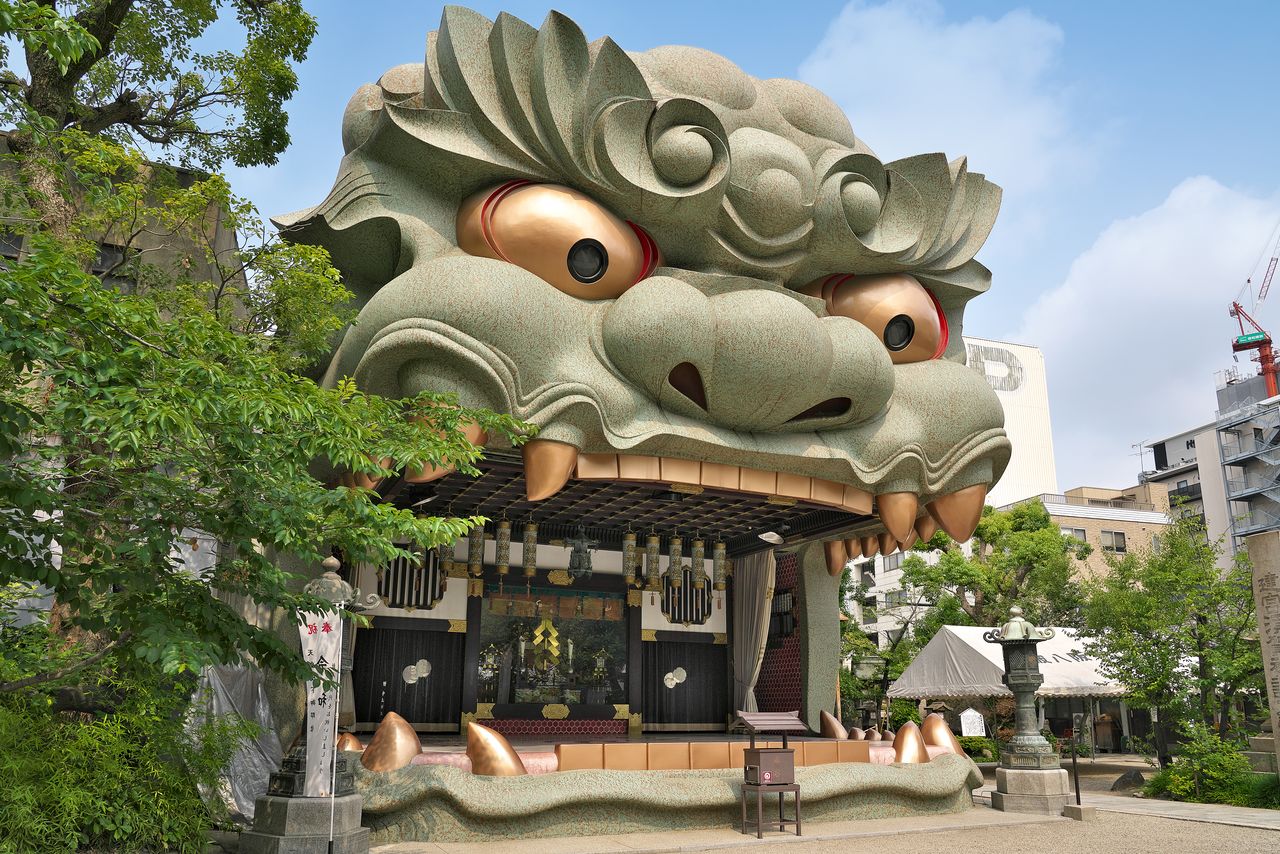
Nanba Yasaka Shrine, with its eye-catching emaden hall in the shape of a lion’s head with wide-open mouth. (© Pixta)
(Translated from Japanese. Banner photo: Fushimi Inari Shrine. © Pixta.)

